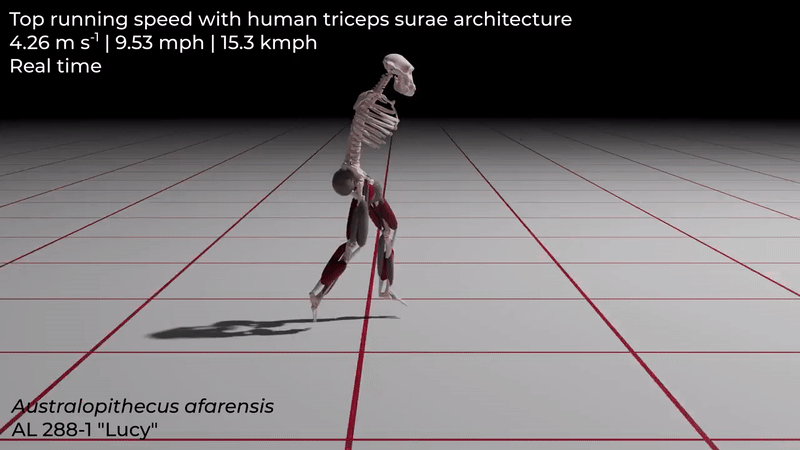A new digital reconstruction of “Lucy,” the 3.2-million-year-old fossil of Australopithecus afarensis, reveals that our ancient relative may have struggled with speed — topping out at just 11 mph (18 km/h). But while Lucy may not have broken any land speed records, her anatomy is helping researchers better understand the evolutionary upgrades that turned humans into world-class endurance runners.
Using advanced musculoskeletal modeling, researchers analyzed Lucy’s skeleton to simulate how she might have moved. The results, published in Current Biology on Dec. 18, show that although australopithecines like Lucy were already walking upright around 4 million years ago, their running ability was limited compared to modern humans, who only evolved efficient bipedal locomotion around 2 million years ago with Homo erectus.
Lucy vs. Modern Runners
In the simulations, Lucy’s maximum running speed peaked at about 11 mph — well below a recreational human runner’s average sprint (13.5 mph or 22 km/h), and a far cry from Usain Bolt’s 27+ mph (43 km/h). Even more telling: she used nearly 2 to 3 times more energy than modern humans to sustain that speed, suggesting that australopithecines were not built for efficient long-distance travel.
Her short legs, long arms, and heavy upper body already hinted at a less streamlined gait. But the researchers also identified another likely culprit: a less-developed Achilles tendon and triceps surae — a group of calf muscles critical to running.
In modern humans, the long, elastic Achilles tendon acts like a spring, storing and releasing energy to make running smoother and less energy-intensive. Lucy’s anatomy, in contrast, lacked this springiness, meaning her stride required more muscle effort and burned more energy.
Rewiring the Engine
To test this theory, scientists created a model of Lucy equipped with a human-like Achilles tendon and more modern calf muscles. While this adjustment improved her efficiency somewhat, it didn’t make her much faster. The limiting factor, they found, was her smaller overall body size.
Still, the researchers say the findings underscore how essential the Achilles tendon and calf structure were in the evolutionary transformation from lumbering bipeds to efficient runners. These upgrades helped pave the way for the endurance running that would later allow early Homo species to chase prey over long distances on the African savanna.
“This highlights the critical role of the Achilles tendon and triceps surae in the evolution of human running mechanics,” the study notes. “Key elements of the human body plan emerged specifically to boost running performance.”






